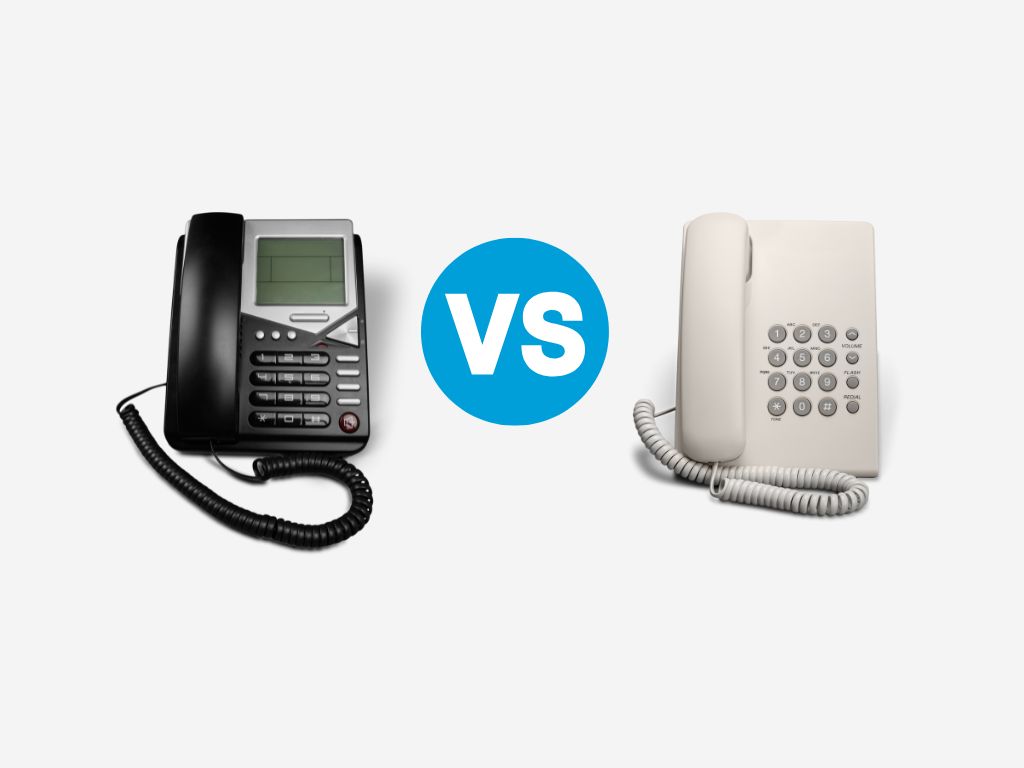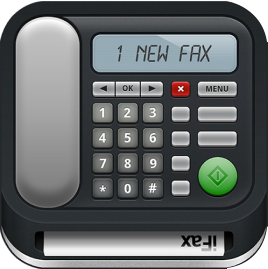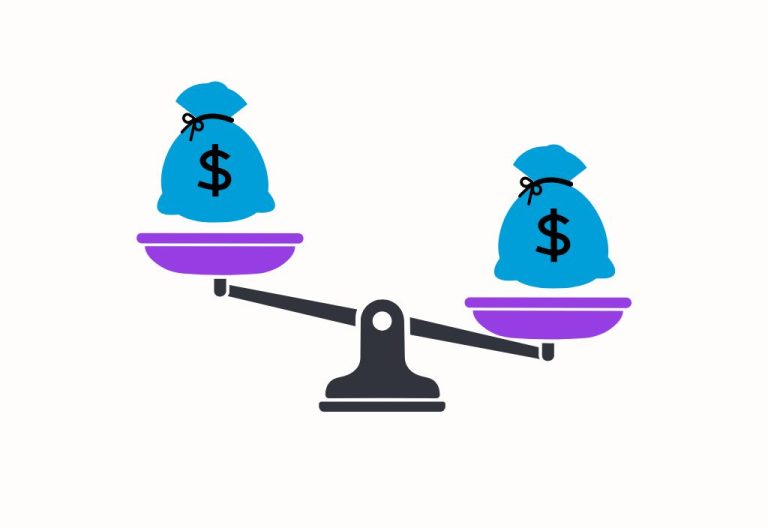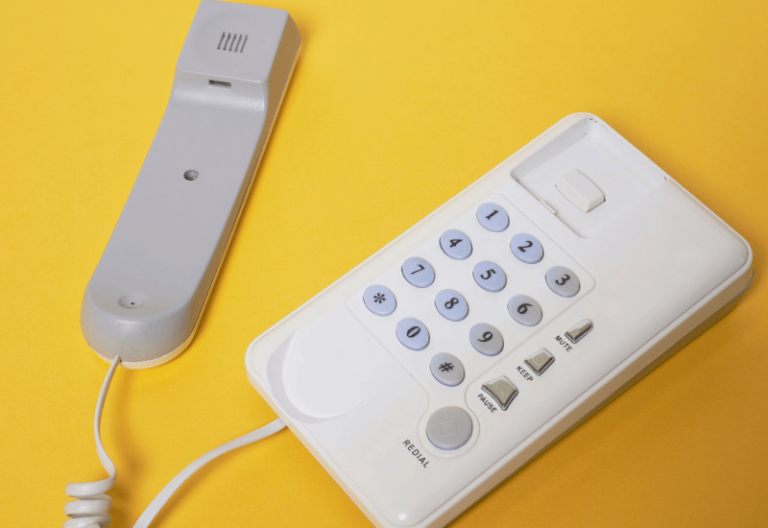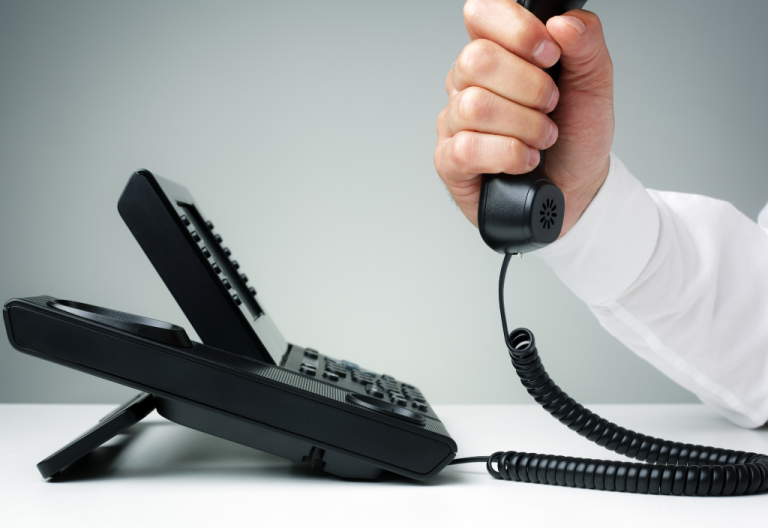VoIP is replacing analog phone lines as modern businesses’ primary and preferred communication method. While analog phone lines had their glory days, the technology is now outdated and will soon become obsolete.
In this VoIP vs analog phone systems article, you’ll discover why VoIP is more beneficial than traditional systems.
Table of Contents
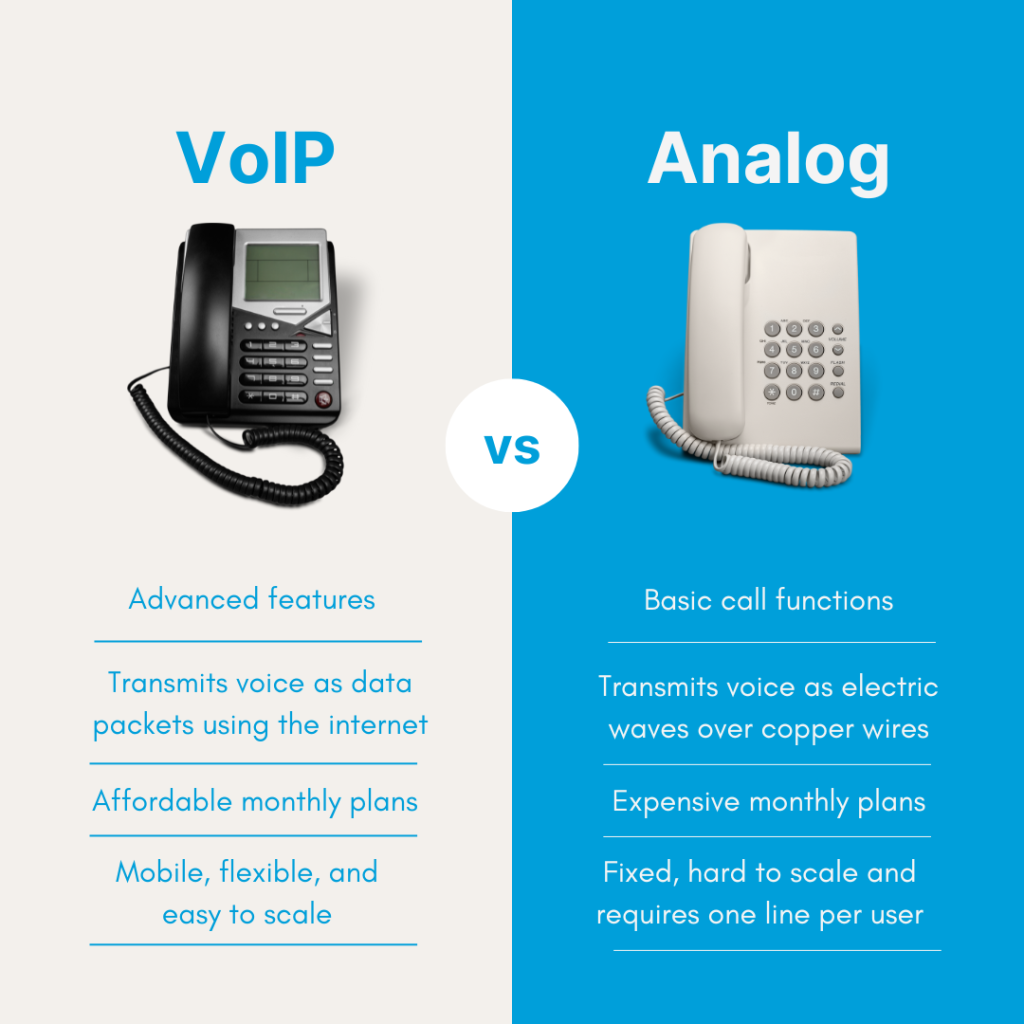
Introduction to VoIP (Voice over Internet Protocol)
Voice over Internet Protocol (VoIP) uses the Internet to make and complete calls. It converts analog voice signals into digital data packets and transmits them using broadband internet connections.
This technology can be used with VoIP phones, software-based applications (softphones), or even traditional phones with an adapter. It’s generally cheaper than traditional landlines because they are easier to set up and cost less to maintain.
One of the biggest benefits of using VoIP is the availability of advanced features. You can enjoy call forwarding, voicemail-to-email, video conferencing, and more. Plus, VoIP is easy to scale. You can easily add or remove users without significant infrastructure changes.
Common Applications of VoIP
- Free or low-cost personal communication through services like Skype, WhatsApp, and Zoom
- Virtual call centers with cloud-based solutions
- Remote work and unified communications
Read Further: VoIP Innovations and Trends in 2025
Introduction to Analog Phone Lines
The analog phone system is the traditional counterpart of VoIP and is also known as POTS (Plain Old Telephone System). It transmits voice signals over copper wires using a circuit-switched technology to establish a connection between two parties.
Voice signals are turned into a continuous electrical waveform, which travels through physical telephone cables to reach its destination. Since analog lines rely on physical infrastructure, they provide consistent voice quality and work even during power outages.
However, analog phone lines only support basic calling functions. Unlike VoIP, you can’t do much beyond dialing, basic call waiting, and voicemail. Analog lines can only handle one call at a time, so you need additional lines for multiple simultaneous calls.
One of the main challenges with analog phone lines is their reliance on copper wires. Telecom companies are retiring their copper networks because of the huge maintenance costs and inefficiency of supporting them. Instead, they’re transitioning consumers to fiber optic or wireless technology, which can’t support analog phone systems.
Read Further: Understanding the Impact of Copper Switch-off
Common Uses of Analog Phone Lines
- Fax machines, security systems, and basic phone systems
- Emergency communication for hospitals, telephones, and alarm systems
- Residences with analog landlines for backup communication
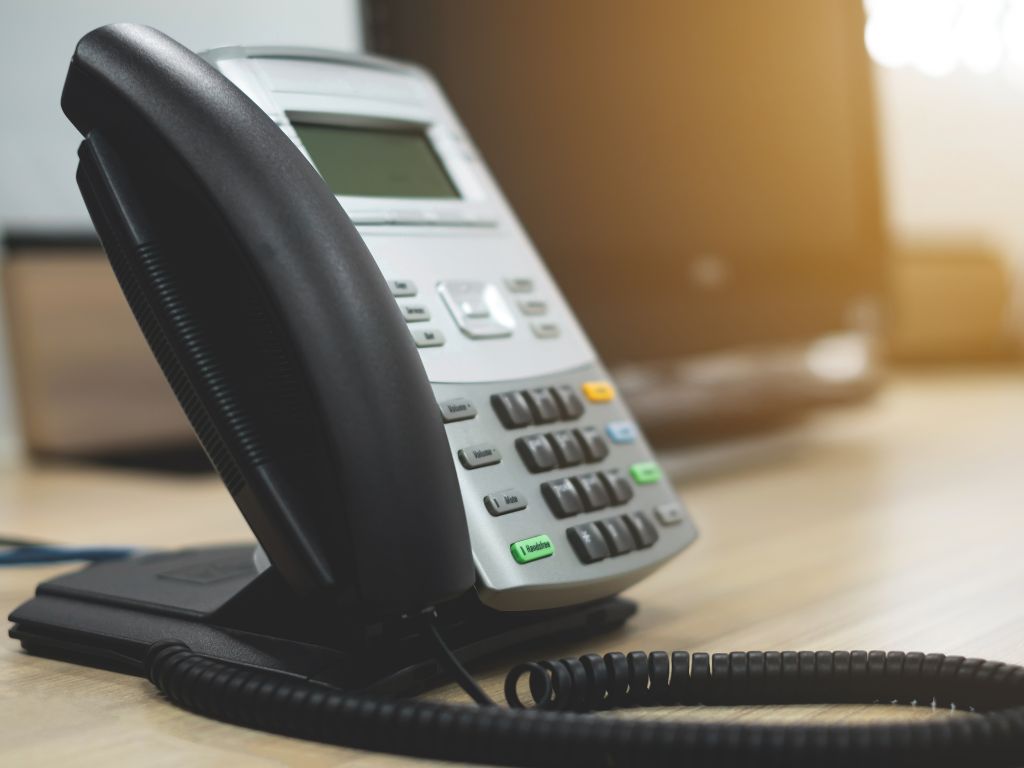
Differences Between VoIP and Analog
VoIP and analog rely on different technology and systems to offer significantly different services. You can say that VoIP is the better alternative to analog phone systems. Here’s a detailed breakdown of the differences between VoIP vs analog phone systems.
| Feature | VoIP Phone System | Analog Phone System |
| Technology | Digital, transmits voice as data packets over the internet | Analog, transmits voice as electrical signals over copper wires |
| Connection Type | Requires an internet connection (broadband) | Uses traditional telephone lines |
| Call Quality | Depends on internet speed and bandwidth; can offer HD voice quality | Generally stable but subject to line noise and interference |
| Reliability | Can be affected by power outages and internet disruptions | Works even during power outages (if connected to the main telephone network) |
| Cost | Generally cheaper, especially for long-distance and international calls | Can be more expensive, especially for long-distance calls |
| Scalability | Easily scalable; new users can be added without extra wiring | Limited scalability; requires additional physical lines for expansion |
| Features | Advanced features like voicemail-to-email, call forwarding, video conferencing, and mobile integration | Basic features like call waiting, caller ID, and voicemail |
| Hardware Required | VoIP phones, softphones, or adapters for traditional phones | Standard telephone handsets connected to copper lines |
| Mobility | Can be used anywhere with internet access | Fixed location, tied to physical telephone infrastructure |
| Fax Protocol | Requires an analog terminal adapter (ATA) and support for T.38 protocol | Uses G.711 codec to encode and compress audio signals |
| Emergency Calls | May have limitations in routing emergency calls (depends on provider) | Direct connection to emergency services (911, etc.) |
| Best For | Businesses, remote work, international calls, and advanced communication needs | Homes, small offices, emergency lines, and areas with unreliable internet |
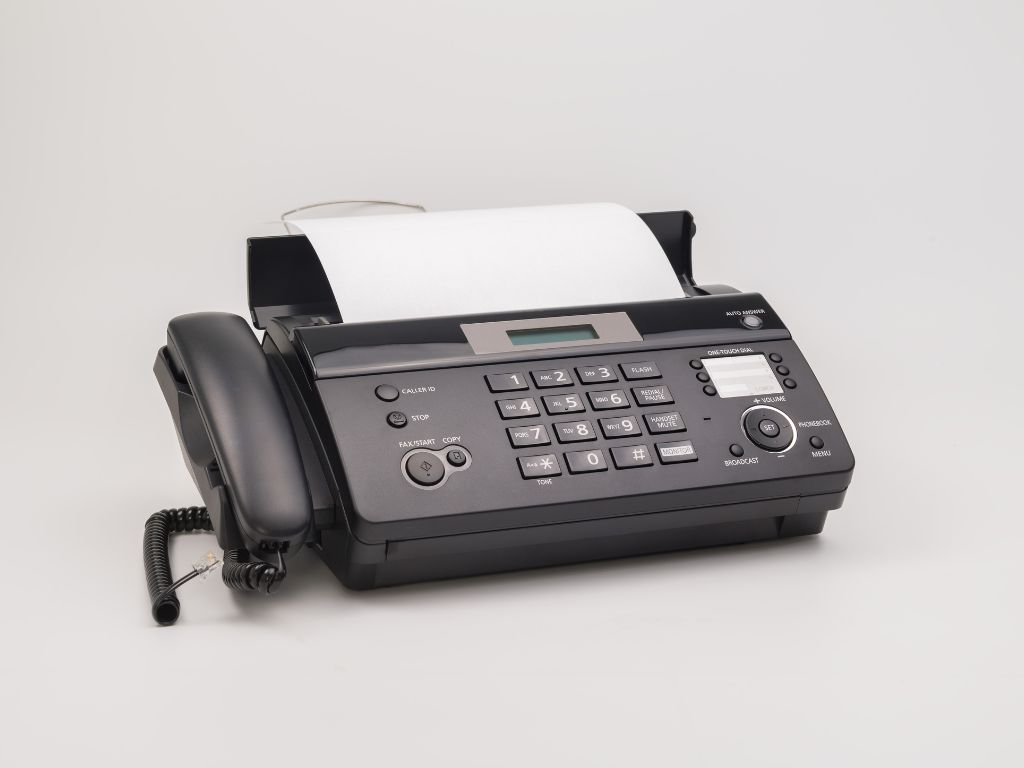
Faxing With VoIP vs Analog Lines
Fax machines are one of the most common applications of analog lines. Businesses in heavily regulated industries like healthcare rely on faxing to share secure and encrypted communications.
However, with the retirement of copper phone lines, traditional faxing that relies on analog phone lines must be replaced. A viable alternative is faxing via VoIP or fax over Internet Protocol (FoIP).
Analog faxing uses G.711 codec to encode and compress audio signals. You can use any fax machine for FoIP by connecting an analog terminal adapter (ATA) to a VoIP gateway and ensuring the fax machine supports the T.38 protocol.
It’s a complex but doable setup if you still want to use physical fax machines for your business. A better alternative would be to use cloud faxing. Cloud fax refers to web applications that turn your computer into a fax machine.
They offer the same benefits as traditional fax machines but with the added convenience of flexibility and mobility. You can trust that faxes are sent via secure and encrypted networks, mitigating cybersecurity risks. Cloud fax also lets you send and receive faxes via email and through mobile apps.
Choosing Between VoIP and Analog
VoIP offers more benefits than analog phone systems. For modern businesses, it’s a no-brainer which technology to choose between the two. VoIP systems are inexpensive, scalable, and flexible. You can be sure that they’ll be supported for years to come.
Meanwhile, analog systems are outdated, costly, and inflexible. Even though they remain reliable, especially during power outages, telecom companies will likely stop supporting them soon. Switching to VoIP today can save you headaches in the future.



